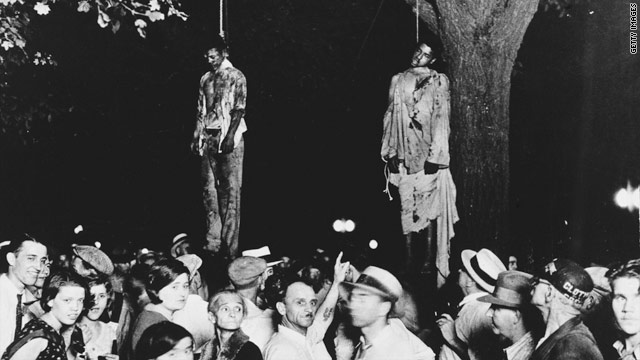Seem 1:27
Cuticun Pathian in
milai * cu a seemsuah; Pathian in amah ih hmuihmel vekin a seemsuah. Pathian in
mipa le nunau a seemsuah a si.
Thuhmaihruai
Leilung tlunah a hlawhtling zetmi pakhat tla na si thei men.
Asinan, na nunnak hi Pathian ih a lo hmuitinmi ah na feh ngah hrih lo tla a si
thei. Hlawh tlingmi nunnak timi le Pathian ih tumtahnak lamzin ih feh ngah hi a
bang aw lo (Being successful and fulfilling your life purpose is not the same).
Pakhat cio in zo ka si? Pathian in ka nunnak hi ziangtuah dingah I tumtah sak
timi theih awk ding hi a thupi bik. Tuantein na nauhak lai ih na theih ngah le,
nun thaw reipi le tampi in na ei ngah ding. Tlai hnupi lawng ih na theih ahcun,
tlai hnu pi lawngah cuih nun duhnung le nun thaw cu tlai hnu pi lawngah na ei
ngah ding.
Leilung tlun ih kan nunnak hi ziangruangah Pathian in in
sersiam? Ziang tuah dingah, ziangti ih um dingah kan nunnak Pathian in in
sersiam ti si pei ti ih theih hi a thupi tuk lawm lam. A tawi zawng cun, zo ka
si (Who am I?) timi a si.
1. Pathian ih palai,
a aiawhtu kan si.
Seem 1:27
“Cuticun Pathian in milai cu a seemsuah; Pathian in amah ih
hmuihmel vekin a seemsuah. Pathian in mipa le nunau a seemsuah a si.”
Bible in Pathian ih hmuihmel keng ih sersiammi nan si tiah
in sim. Pathian ih hmuihmel keng cu ziangvek a si pei? Mihrek in Pathian ih
hmuihmel kan kennak cu kan thuruah theinak, thlarua neitu kan sinak ti pawl hi
a si tiah an sim. Cucu ontological
interpretation tiah ti a si. A sullam cu kan sungih thil ummi, kan neihmi
lam zoh ih sim daan a si. Asinan, kei cun, functional
interpretation timi nun daan ding lam thupi ah re in simfiang ka duh.
Mesopotamia ram ahcun, Siangpahrang pawl hi Pathian ih
hmuihmel kengih sersiammi an si tiah an ti. An sim duhmi cu Siangpahrang pawl
cu Pathian aiawhtu ah Pathian ih a sersiammi a si tiah an sim. Mesopotamia ram
timi cu Middle ram pawl hmuahhmuah khi an si ko.
Mesopotamia timi cu Greek tong in a rami a si ih, a sullam
cu tiva pahnih karlak ram tinak a si.[1]
Bible hi Mesopotamia ram sung ummi pawl lak ihsin Pathian ih
a suah termi a si. Bible cun, Seem 1:27
sungah, Siangpahrang pawl lawng Pathian hmuihmel keng ih sersiam an si a ti lo.
Minung zate pi in Pathian ih hmuihmel keng ih sersiam kan si tiah a ti. Asullam
cu minung pawl hi Pathian ih palai, kusale kan si tinak a si.
Kan sinak taktak, kan identity taktak cu England
Siangpahrang ih palai, Obama ih palai vek men kan si lo. Pathian, lei le van a
sersiamtu ih palai, amah aiawhtu sokhaw kan si.
Cui a palai pawl cun ziang si an hnatuan? Pathian aiawhtu, a
palai ih an tuah dingmi cu Pathian in leitlun ah a tuah duhmi pawl kha leitlun
ah kim tertu ding an si. Jesuh in hitin thlacam uh tiah in zirh, “Vancung ah na
duhnak a kim bang in leitlun khal ah kim ter ve aw.” Cumi cu kan thlacam dingmi
a si. Cumi Pahtian ih duhnak cu kan pumpak nunnak ah, kan innsang ah, kan
Kawhhran ah, kan hnatuannak le umnak kip ah kim ter ding cu Pathian palai le
Amah aiawhtu pawl ih kan hnatuan le nun mansan cu a si.
Curuangah, leilung tlunah Pathian in in nun ternak san cu
kanmai duhmi kim ter dingah a si lo. Amah Pathian ih duhnak kim ter dingah in
nun ter sawnmi kan si. Curuangah si Matt 6:33 sungah, Jesuh in nan ei in ding
le sinfen ding hrangah khuaruah har in um hlah uh, Pathian in nan tul ti a lo
thei. Cu hnak in, Pathian in ziang tuah ter I duh timi kha hawl hmaisa sawn
uhla, nan tulmi cu a lo bet ding a si tiah in sim.
2. Jesuh thisen ih
leimi Pathian fa kan si.
Asinan, a poi zetmi cu zozo khal Pathian duhmi hnak in kan
maih duhmi kim ter dingah kan buai ih, zin kan hlo theu. Sualnak kan tuah ih,
Pathian palai si lo in, Satan palai ah kan nunnak kan pe aw theu. Cucing khal
ah Pathian in a palai pawl kha in hnong siang lo ih, kan sual zet lai cingah a
fapa Jesuh a run thlah ih, kan sualnak a thisen in in kholhfai sak (Rom 5:8). A thisen in ka sual kholhfai a si
zo timi a zumtu pawl kha sual nei dah lomi nunnak neitu ah a can ter a si (2
Cor 5:17). Cuih tlun ah Pathian fa sinak
(Rom 8:14-17) le kumkhua nunnak khal in pek.
Eph 1:13-14 … Pathian amah ta nan sinak hminsinnak ah
Thlarau Thianghlim in pek.
Jn 5:24 … “Ka simmi a thei ih a zumtu cu kumkhua
nunnak an nei”
1 Jn 5:13 … “Fapa a zumtu in kumkhua nunnak kan nei ti nan
theihnak dingah, hi cakuat hi nan hnen ah ka ngan a si”
3. Jesuh Khrih thawn
bang aw ding ih sersiammi kan si.
Pathian ih duhmi hi kan tuah dingmi a si ahcun, Pathian ih
duhmi cu ziang a si timi hi kan theih a tul. Cumi kan fiang theinak dingah
Pathian cu a fapa Jesuh Khrih sung in leitlun ah rung lang. A fapa Jesuh Khrih
hmang in a duhmi le nun ter in duh daan pawl a langh ter.
Rom 8:29
Pathian in a hriil ciami pawl cu a
Fapa hmuihmel keng dingah a thiadang cia hai; cuti cun unau tampi lakah a Fapa
cu upa bik a sinak dingah a si.
Zumtu a simi cu Jesuh Khrih thawn bang aw ding ih sersiammi
kan si. Jesuh Khrih thawn kan nunnak, kan thinlung put bang aw ih kan feh tlang
ding hi a thupi bik.
Andrei Bitov, Russian noverlist in, “Kum 27 ka ti ah, nunnak
timi cu tu a suak ih a cemhlo men ti ka ruat ih, nun ka paih nawn lo. Cu lai
ah, Pathian ii pan ter tu catluan te cu, ‘Pathian tel lo ih nun cu sullam a nei
lo. Without God life makes no sense.’”
Pathian tel lo ih nun cu, fehtumnak um lomi mawtaw mawn vek men a si. Jesuh
Khrih nun daan thawn artlaang ih feh lomi nunnak cu vur lak ih lam hlomi vek
kan si.
Thunetnak
Unau pawl tuih sunah zo ka si ti na thei aw maw? Ka thinlung
put le nun daan teh ziangtin a si ding ti na thei maw?
1.
Nang cu leitlun ah Pathian aiawhtu le a palai na
si.
2.
A palai ti men lawng a duh lo ih, a fapa ah a
lak zomi na si.
3.
Pathian aiawhtu ding pawl ih kan nun daan ding
cu Jesuh Khrih thawn bang aw ding hi a si.




